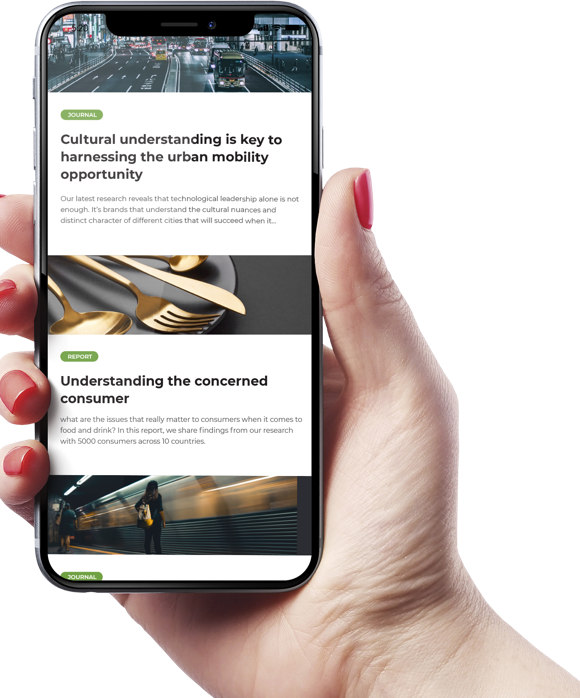The ecommerce industry, a cornerstone of modern retail, is entering a new phase of transformation. As technology evolves and consumer behavior shifts, businesses are under increasing pressure to adapt quickly and stay competitive. With the rise of AI, social commerce, faster logistics, and the push for sustainability, the ecommerce landscape is rapidly changing. Companies must innovate to meet the growing demands of consumers who now expect faster, more personalized, and environmentally conscious shopping experiences.
In this blog, we will explore the four key trends expected to redefine ecommerce in 2025: AI-driven shopping experiences, the expansion of social commerce, logistics innovations, and the focus on sustainable ecommerce. Each of these trends presents new opportunities and challenges that will reshape how businesses operate and engage with customers in the years ahead.
Trend 1: AI-Driven Shopping Experiences
Artificial intelligence is transforming the way consumers shop online, creating highly intuitive and personalized shopping journeys. From product recommendations based on past purchases to virtual shopping assistants that guide customers through their buying process, AI is playing an increasingly central role in enhancing the ecommerce experience. As technology continues to advance, AI is set to become integral to driving customer engagement and boosting conversion rates.
AI allows brands to deliver tailored experiences that increase customer satisfaction by offering personalized product suggestions, content, and promotions. This level of customization fosters stronger customer loyalty and enhances the overall shopping experience. On the operational side, AI enhances efficiency by automating inventory management and demand forecasting, ensuring that products are in stock and ready to meet consumer needs.
In addition, AI-driven solutions can predict consumer behavior and anticipate their needs, which leads to higher conversion rates.
By analyzing data from browsing patterns, previous purchases, and even social media activity, AI can help businesses address specific consumer needs at the right moment, optimizing the path to purchase. As AI technology continues to evolve, it will only become more integral to the ecommerce landscape, helping brands stay competitive in a rapidly changing market.
Case Study: Carrefour – Leveraging AI for Enhanced Customer Interactions
Carrefour, one of France’s largest retail chains, has successfully integrated AI-powered chatbots and generative AI into its operations to elevate its customers’ shopping experience. The brand’s AI assistant, Hopla, helps customers find products, answer queries, and provide personalized recommendations, improving the overall shopping experience.
By utilizing AI to handle routine customer inquiries, Carrefour enhances the customer service process and streamlines internal operations, freeing up employees to focus on more complex tasks. Hopla’s use of natural language processing and AI-driven algorithms allows it to assist customers in real time, guiding them through product searches and even assisting with checkout. This integration of AI into both customer-facing and internal processes highlights Carrefour’s commitment to leveraging technology to improve efficiency and customer satisfaction.
This case study is an excellent example of how AI can enhance the customer journey and operational efficiency, making it a perfect illustration of AI-driven shopping experiences.
Trend 2: The Expansion of Social Commerce
Social media platforms are increasingly doubling down on their ecommerce capabilities, transforming how consumers discover and purchase products. With seamless integration of shopping features into social feeds, users can now shop directly from posts, stories, and livestreams, blurring the lines between content consumption and shopping. Livestream shopping and shoppable posts are becoming dominant in social commerce, turning these platforms into powerful sales channels.
This shift changes the way consumers interact with brands, making shopping more immersive and engaging. By combining entertainment with purchasing, platforms like Instagram, TikTok, and Facebook are creating a dynamic shopping experience that encourages impulse buying and fosters deeper consumer-brand connections. As a result, marketing budgets are being redirected toward influencer-driven campaigns and interactive content formats that engage users in real-time.
This expansion of social commerce forces brands to rethink their customer acquisition and engagement strategies. Traditional advertising is no longer enough—brands must now focus on creating compelling, shareable content that fits seamlessly into the social media experience. The rise of micro and nano influencers, who have more engaged, niche followings, further emphasizes the importance of building authentic relationships with consumers.
As social commerce continues to grow, it will redefine the consumer journey, making social media platforms central hubs for discovery, engagement, and shopping. Brands that effectively leverage this trend will be well-positioned to capture the attention of today’s digital-first consumers.
Case Study: Pinduoduo – Transforming Social Commerce through Instant Messaging
Pinduoduo, a leading Chinese e-commerce platform, has revolutionized social commerce by enabling users to make everyday purchases directly through instant messaging platforms. By integrating shopping into social interactions, Pinduoduo has created a seamless and engaging shopping experience that encourages users to interact, share, and purchase products all within a single platform.
This innovative model has attracted a vast user base, especially in China’s lower-tier cities, where it has become a dominant force in the e-commerce space. Pinduoduo’s integration of social elements with e-commerce not only fosters a sense of community but also encourages group buying, where users can share deals with friends and family to access discounts. This approach has proven highly effective, as it taps into the power of social interactions to drive consumer purchases, demonstrating the growing importance of social commerce in today’s digital economy.
Pinduoduo’s success illustrates the future of social commerce, where social platforms and shopping experiences are increasingly intertwined, creating new opportunities for brands to reach consumers and engage them in innovative ways.
Trend 3: Logistics Innovations and Quick Commerce
Speed and convenience have become non-negotiable for today’s consumers, significantly influencing the way e-commerce operates. To meet these expectations, innovations in logistics, such as drone deliveries, dark stores, and micro-fulfillment centers, are reshaping the delivery landscape. These advancements are enabling ultra-fast delivery times, providing the speed and efficiency that customers now demand.
With the rise of quick commerce, consumers expect their orders to arrive not only quickly but also at a lower cost. To keep up with this demand, e-commerce companies are investing heavily in logistics infrastructure and advanced technologies. Automated warehouses, AI-powered delivery routing systems, and drones are just a few examples of the tools being used to streamline operations and speed up delivery times. This requires significant capital and resources, pushing larger retailers to invest in cutting-edge solutions to stay competitive.
Interestingly, these innovations are leveling the playing field for smaller players in the market. Many small and medium-sized businesses are adopting third-party logistics (3PL) solutions to access these advanced capabilities without the hefty infrastructure investment. This democratization of logistics allows smaller retailers to compete with larger companies in terms of delivery speed and efficiency, further driving competition in the e-commerce space.
As logistics technologies continue to evolve, the expectation for faster deliveries will only increase. Retailers that invest in these innovations will be well-positioned to meet consumer demands and thrive in the increasingly competitive e-commerce environment.
Case Study: Flipkart – Revolutionizing Delivery with Sustainable Logistics
Flipkart, a leading Indian e-commerce platform, is enhancing its delivery capabilities by integrating 25 liquefied natural gas (LNG) trucks into its logistics network. This initiative is part of the company’s broader strategy to reduce carbon emissions and improve delivery efficiency across India.
By adopting LNG trucks, Flipkart is taking significant steps towards a more sustainable logistics model, as LNG is a cleaner alternative to traditional diesel fuel, resulting in lower greenhouse gas emissions. This shift not only supports Flipkart’s commitment to sustainability but also improves delivery speeds, enabling the company to meet the increasing demand for fast, efficient service in a competitive market.
Flipkart’s investment in eco-friendly logistics demonstrates how e-commerce giants can innovate to address both environmental concerns and the growing consumer demand for faster, more reliable deliveries. This case study highlights the importance of sustainability in logistics, setting a benchmark for other companies looking to integrate greener practices into their supply chain operations.
Trend 4: Focus on Sustainable Ecommerce
Sustainability is becoming a top priority in ecommerce as both consumers and regulators demand greener practices. From eco-friendly packaging to carbon-neutral shipping options, brands are being pressured to adopt more sustainable operations. Beyond packaging, companies are also exploring second-hand marketplaces and product take-back programs to extend the life of products and reduce waste.
This focus on sustainable ecommerce will disrupt the industry in several ways. First, it forces brands to rethink their entire supply chain and packaging strategies, ensuring that every aspect of the process is aligned with environmental responsibility. Brands that demonstrate genuine commitment to sustainability will not only meet regulatory requirements but also increase consumer loyalty, as today’s shoppers are increasingly making choices based on ethical practices. However, there’s a fine balance between sustainability and cost efficiency.
Companies must innovate to deliver on both fronts, without driving up prices or reducing operational efficiency. As the pressure for greener practices grows, the ecommerce landscape will continue to evolve toward more sustainable solutions, reshaping the way businesses operate.
Case Study: H&M Group’s Commitment to Sustainable Sourcing
H&M Group, a leading fashion retailer based in Sweden, has made significant strides in integrating sustainability into its operations. As of 2023, the company reported that 85% of its materials were recycled or sustainably sourced, aiming for 100% by 2030.
This commitment is part of H&M Group’s broader strategy to reduce its environmental impact and promote a circular economy.
In addition to sustainable sourcing, H&M Group has implemented several initiatives to enhance its sustainability efforts:
- Sustainable Impact Partnership Program (SIPP): This program assesses supplier compliance with the company’s sustainability standards, ensuring that partners adhere to ethical and environmental guidelines.
- H&M Foundation: Established in 2014, the H&M Foundation funds projects aimed at creating a socially inclusive and planet-positive textile industry. The foundation has invested over SEK 1.7 billion since its inception.
H&M Group’s dedication to sustainable sourcing and its comprehensive initiatives demonstrate a proactive approach to addressing environmental challenges within the fashion industry.
Final Thoughts
The trends shaping the future of e-commerce—AI-driven shopping experiences, the expansion of social commerce, logistics innovations, and the focus on sustainability—are not just altering how businesses engage with customers but setting new benchmarks for success in the industry. As these trends continue to evolve, they will define the future of retail, demanding greater agility and innovation from businesses aiming to stay competitive.
Adaptability is key to thriving in this fast-paced environment. Companies that invest in cutting-edge technologies, embrace new consumer behaviors, and prioritize sustainability will be best positioned to capitalize on the opportunities presented by these disruptions.
For more insights into the latest trends and strategies shaping the future of the e-commerce industry, subscribe to Connecting the Dots, our monthly e-newsletter. Stay informed, stay inspired, and lead the change in your industry.
Get regular insights
Keep up to date with the latest insights from our research as well as all our company news in our free monthly newsletter.





 Senior Marketing Executive
Senior Marketing Executive Sales & Marketing
Sales & Marketing General Manager PR -Internal Communications & Government Affairs
General Manager PR -Internal Communications & Government Affairs Vital Strategies
Vital Strategies
 Customer Intelligence Director
Customer Intelligence Director